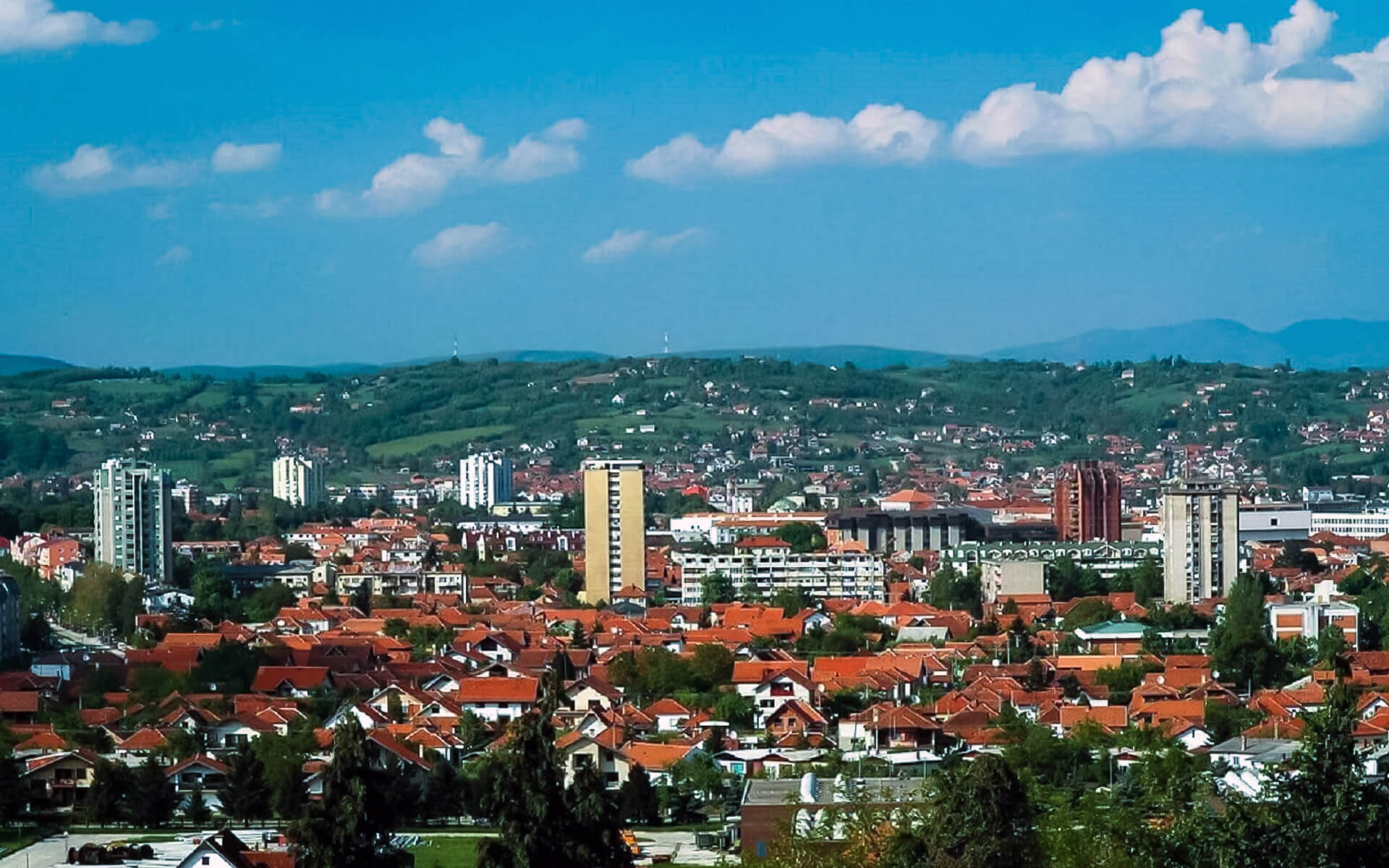Čačak is a city in western Serbia and the administrative headquarters of the Moravica District. Čačak is located in the Čačak-Kraljevo valley, on the West Morava river, Serbia’s second biggest river after the Danube (308 km), and between Sumadija and the Dinaric Alps. The lowest point is 204 m (the junction of the rivers Bresnika reka and Zapadna Morava) and the highest point is 985 m (the highest summit of the Ovcar mountain). The city has a population of 73,331 people, while the municipality has a population of 115,337 people.
The city has a population of 73,331 people, while the municipality has a population of 115,337 people. Čačak is the primary crossroads and economic hub in western Serbia, bordering Pozega (Zlatibor District) to the west, Knic (Sumadija District) to the east, and Kraljevo (Raska District) to the southeast. It also serves as the administrative and cultural hub for the Moravica District, which encompasses Gornji Milanovac to the north, Lucani to the southwest, and Ivanjica to the south. It is situated 144 kilometers south of Belgrade, Serbia’s capital city.
In its environs, the city boasts a unique morphological region, the Ovcar-Kablar Gorge, where 300 monasteries were erected since the 14th century, although only 12 exist now. This region is also known as “Serbian Mount Athos.” Čačak was given its present name in 1408; until to that, it was known as Gradac. Stracimir Zavidovic, the brother of Serbian monarch Stefan Nemanja, was one of Gradac’s commanders. He constructed the church of ‘Our Lady’ (Church of Jesus Ascension), which still remains in Čačak’s center. Following an earthquake that destroyed the church’s front, it was rebuilt from 2010 to 2011.
Čačak was a part of the Ottoman Empire from 1459, when Serbia lost its independence to the Ottomans, until 1718, and again from 1739 to 1878. It served as the Habsburg Empire’s southern settlement from 1718 and 1739. During the Second Serbian Uprising in 1815, Čačak was heavily fought over. A memorial honoring Tanasko Rajic, who died bravely while defending the city, today sits on the highest point of Ljubic hill, where the major fights of the rebellion were fought. In 1817, Serbia was granted autonomy inside the Ottoman Empire. Sixty-one years later, Serbia gained independence.
Čačak was a part of the Kingdom of Serbia from 1882, and then of the Kingdom of Yugoslavia until 1941. Čačak was the eastern hamlet of the short-lived Uzicka republika, which was cut off by Nazi Germany soon after it was created in 1941. After WWII, it was a member of SFR Yugoslavia until 1992, and then FR Yugoslavia until 2006. Čačak has been a part of the Republic of Serbia since then.


